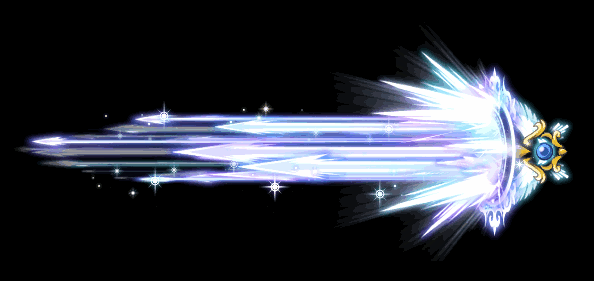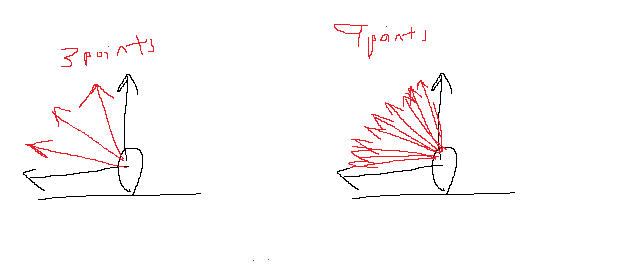I was wondering how the game handles the skill named Spectral light. It just boggles my mind at every turn, it seems like it'd be impossible to make.
This is the skill in question:

The skill works as follows: depending on the arrow key pressed, you can swivel the laser in nearly a 180 degree range about the player (who acts as the axis). The laser (and its corresponding hitbox) can then hit different monsters depending on its current position.
This is a video of how it works: [media]
[/media]
What I am curious about is how the hitboxes, rotation and animation loop code work.
For a better illustration of what I am referring to, here is a graphical representation of what I mean by 'points' at which the laser can be fired from. I will be defining this 'points' term within the context of this topic for easier discussion purposes.

The animation in question is rather smooth and as such I suspect a large number of points (perhaps around 15-20).
1) Hitboxes (obviously a normal rectangle isn't going to work for the various angles; is it more efficient for gameplay for the coder to plot a new polygonal hitbox that is associated with every 'point' of rotation, or are there other methods? If there are, what are they and how do they work?
2) Rotation- The actual 'loop' of the laser is 12 frames long. Is it possible that there are 12 individual pictures in the data for every single 'point' from which Spectral Light can be fired? If this were true, there would be a staggering number of images within the data just for this one skill. Won't the method simply refuse to run/crash/suck up immense amounts of memory and then cause a crash? Does anyone have information how this could be done in an efficient manner (fast loading, no memory leak, no crashing the program)?
3) Animation loop code- I understand that in Flash you can have an animated image that can be rotated while it loops its animation- however MapleStory is made in C++ and not Flash, so I was wondering how they accomplished this.
Say frame 1 plays at point x, when you swivel to point y, how did the coder do it such that the game knows it must play frame 2 of point y and must not start again from frame 1 of point y? From the videos I've watched, the frames are looping as they should as you swivel the laser, and the laser's animation does not re-start from frame 1 when it is swiveled to a new 'point' of firing. How could this have been accomplished?
I find this entire skill very puzzling. I've been trying to figure out how they did this.




